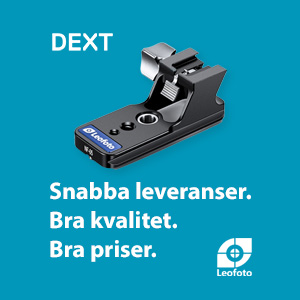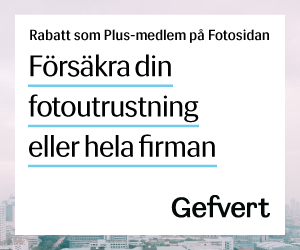J. S-g.
Aktiv medlem
Vi tar en bild av en människa. Vi kallar det ett porträtt. Det här till exempel. Vi tittar på bilden. Porträttet är enkelt och rakt på, inte särdeles utstuderat eller ifrågasättande. Eller? Vi tar en ny bild av en människa. Vi kallar också detta ett porträtt. Det här till exempel. Vi tittar på bilden. Porträttet är utstuderat och ifrågasättande, inte särdeles enkelt och rakt på. Eller?
Realismen är ofrånkomlig när vi talar om porträtt. Men vilken realism är det vi talar om? Är det första porträttet mer realistiskt än det andra, eller tvärtom? Låt oss för en sekund eller två anta att detta verkligen spelar någon roll.
När Terry Eagleton diskuterar realismen i en essä i London Review of Books skriver han bland annat:
Artistic realism, then, cannot mean 'represents the world as it is', but rather 'represents it in accordance with conventional real-life modes of representing it'. But there are a variety of such modes in any culture, and 'in accordance with' conceals a multitude of problems. We cannot compare an artistic representation with how the world is, since how the world is is itself a matter of representation. We can only compare artistic representations with non-artistic ones, a distinction which can itself be a little shaky.
Och litet senare:
To describe something as realist is to acknowledge that it is not the real thing. We call false teeth realistic, but not the Foreign Office. If a representation were to be wholly at one with what it depicts, it would cease to be a representation. A poet who managed to make his or her words 'become' the fruit they describe would be a greengrocer. No representation, one might say, without separation. Words are certainly as real as pineapples, but this is precisely the reason they cannot be pineapples. The most they can do is create what Henry James called the 'air of reality' of pineapples. In this sense, all realist art is a kind of con trick - a fact that is most obvious when the artist includes details that are redundant to the narrative (the precise tint and curve of a moustache, let us say) simply to signal: 'This is realism.' In such art, no waistcoat is colourless, no way of walking is without its idiosyncrasy, no visage without its memorable features. Realism is calculated contingency.
Är alltså det första porträttet mera realistiskt eftersom det uppenbarligen har mera av den jameska "air of reality"? Eller är det andra porträttet mera realistiskt eftersom det uppenbarligen har mindre "air of reality" och förhåller sig mera aktivt till realismen som 'calculated contingency'?
Frågan är åtminstone litet intressant eftersom porträttfotografin i så hög grad hänger sig åt realismen -- därtill en form av realism som, åtminstone i mina ögon, alltför ofta tar formen av den omöjliga ambitionen: "represents the world as it is". Litet större separation i representationen hade inte skadat, kan jag tycka.
Realismen är ofrånkomlig när vi talar om porträtt. Men vilken realism är det vi talar om? Är det första porträttet mer realistiskt än det andra, eller tvärtom? Låt oss för en sekund eller två anta att detta verkligen spelar någon roll.
När Terry Eagleton diskuterar realismen i en essä i London Review of Books skriver han bland annat:
Artistic realism, then, cannot mean 'represents the world as it is', but rather 'represents it in accordance with conventional real-life modes of representing it'. But there are a variety of such modes in any culture, and 'in accordance with' conceals a multitude of problems. We cannot compare an artistic representation with how the world is, since how the world is is itself a matter of representation. We can only compare artistic representations with non-artistic ones, a distinction which can itself be a little shaky.
Och litet senare:
To describe something as realist is to acknowledge that it is not the real thing. We call false teeth realistic, but not the Foreign Office. If a representation were to be wholly at one with what it depicts, it would cease to be a representation. A poet who managed to make his or her words 'become' the fruit they describe would be a greengrocer. No representation, one might say, without separation. Words are certainly as real as pineapples, but this is precisely the reason they cannot be pineapples. The most they can do is create what Henry James called the 'air of reality' of pineapples. In this sense, all realist art is a kind of con trick - a fact that is most obvious when the artist includes details that are redundant to the narrative (the precise tint and curve of a moustache, let us say) simply to signal: 'This is realism.' In such art, no waistcoat is colourless, no way of walking is without its idiosyncrasy, no visage without its memorable features. Realism is calculated contingency.
Är alltså det första porträttet mera realistiskt eftersom det uppenbarligen har mera av den jameska "air of reality"? Eller är det andra porträttet mera realistiskt eftersom det uppenbarligen har mindre "air of reality" och förhåller sig mera aktivt till realismen som 'calculated contingency'?
Frågan är åtminstone litet intressant eftersom porträttfotografin i så hög grad hänger sig åt realismen -- därtill en form av realism som, åtminstone i mina ögon, alltför ofta tar formen av den omöjliga ambitionen: "represents the world as it is". Litet större separation i representationen hade inte skadat, kan jag tycka.
Senast ändrad:









